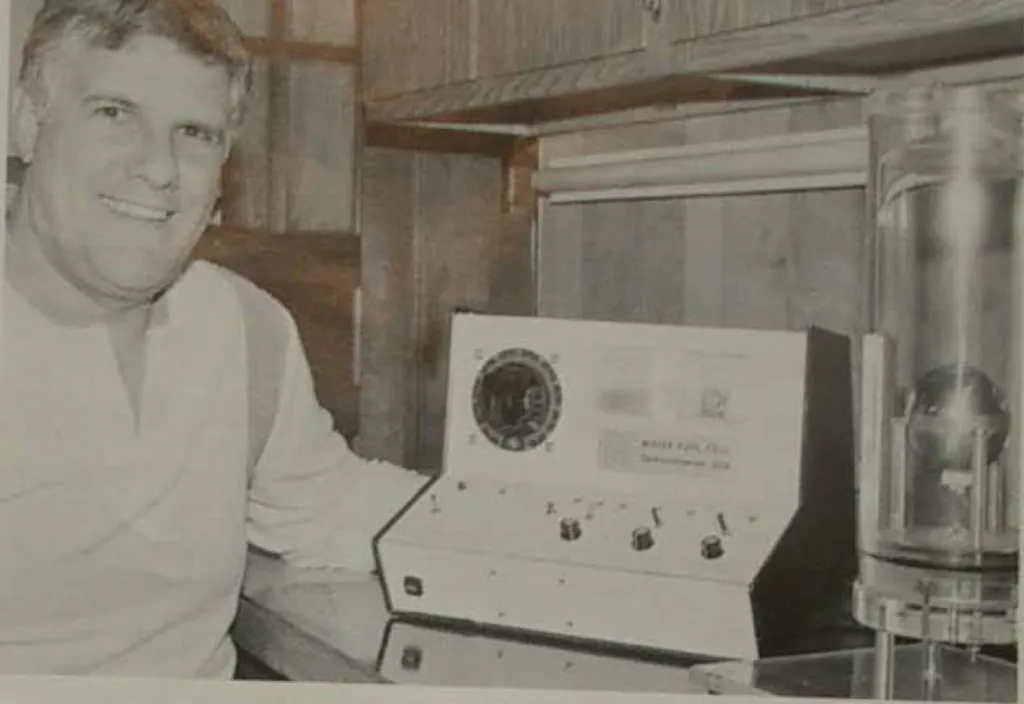Scientists examine Water Fuel Cell - January 25th, 1990
By Marcia Thompson
January 25th, 1990
Stan Meyer, Grove City resident and inventor of the Water Fuel Cell, a means of obtaining energy from water, has been working for over nine years on the development of the technology base, the processing of patents, and now the pre-engineering designs for a system which could well solve the energy problems of the world.
“It may seem like a long time to outsiders, and people would like to see things move forward faster than they have in bringing out the Water Fuel Cell system on the marketplace,” said Meyer, “but it has already moved faster compared to industry standards.”
He explained that normally it would take about $250 million for an industry such as the one he’s working with to achieve such an engineering and development project in such a short time compared to industry timelines.
"We’ve achieved quite a lot for just $1.6 million, and we are now at the final stages of development,” Meyer said.
Meyer said that this would allow them to produce two mass-production ready machines per day, with 11,000 units projected for production after full industrialization of the Water Fuel Cell system within 18-24 months.
When asked, “How much will it cost? Will it be efficient? Will it work?" Meyer’s response was clear: It will cost around $1,500 for a retrofit system adaptable to existing cars, and their testing is showing that it will be fully functional upon rollout to the market.
Dune buggy to run on water
Meyer stated that if things continue according to plan, there are no technical blocks that interfere, the dune buggy he has fitted with the Water Fuel Cell System will be rolled out in June of this year.
"This is subject to having everything tested, approved, and registered, and as long as everything remains on track, it will enter mass production within 18-24 months," said Meyer.
The same technology can be applied to planes and cars, as Meyer stated, “We’re designing all the systems under Murphy's Law. 'Whatever can go wrong, will go wrong,' and so our systems approach is built under a ‘Keep It Simple, Stupid’ (K.I.S.S.) method.”
Meyer is confident the Water Fuel Cell system could help avoid future environmental catastrophe, citing the simplicity and performance of the system as key benefits in reducing the reliance on fossil fuels.
Pre-engineering plans developed for Water Fuel Cell
Meyer has been in the final stages of pre-engineering, developing mass production methods for the Water Fuel Cell.
The straightability of the technology has already been accepted in the scientific world, and what interests the general public is how it works. That’s where the dune buggy comes in.
“The dune buggy is our 'lab on wheels,'” said Meyer. "For everything that's developed for it, we're debugging the system as it's brought out. We're using the highest state of the art to develop systems for this car, yet certain parts can be made for as little as $2 or $3 in mass production."
Meyer said that he's turned down billions of dollars of offers to commercialize the Water Fuel Cell technology and will not release the patents to any outside organization.
A written statement made by Admiral Griffin to the Royal Institute of Naval Architects in London in November 16th stated: “Of all the systems designed to solve the global hydrogen energy crisis, Stan Meyer’s Water Fuel Cell technology promises to be a real solution by generating hydrogen and applying it across industries and universities.”
Meyer’s next challenge is convincing nations and businesses to see the Water Fuel Cell’s potential in saving energy for industries worldwide.

